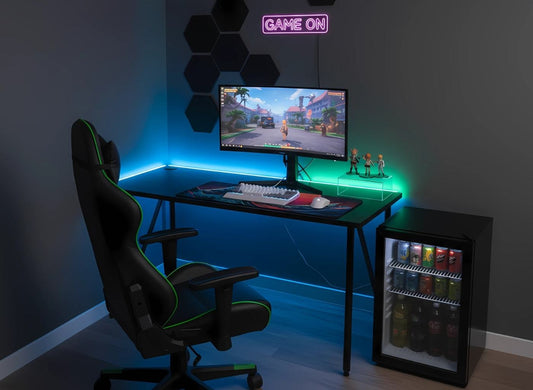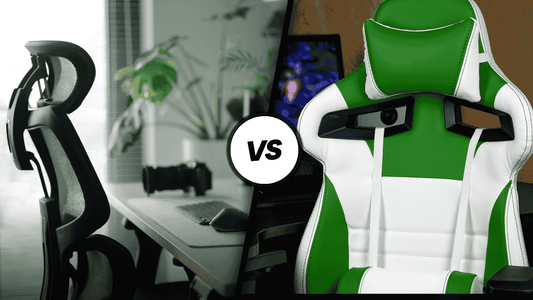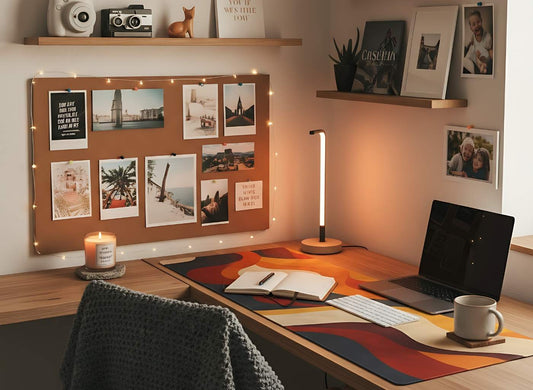Ultimate Guide to Gaming Monitors: Top Models, Specs Explained & How to Choose

Share
If you’ve got a powerful gaming PC, you need a monitor that can keep up. It’s what makes the difference between buttery-smooth action and a screen that can’t keep pace. Reviewers always point out that things like refresh rate, response time, and resolution are key—they’re what decide whether your game looks sharp and fluid or turns into a blurry mess.
A fast panel helps avoid ghosting in fast-paced games (looking at you, FPS players), while high pixel density makes open-world RPGs feel way more detailed. And yep, the panel type matters too—VA, IPS, OLED, or the newer QD‑OLED—all of them have their own strengths when it comes to contrast, colors, and viewing angles.
What to look for in a Gaming Monitor: Good Specs
Before comparing models, master a few basic terms:
-
Refresh rate (Hz). This is how many times per second the screen updates. Competitive gamers favour 144 Hz or higher; flagship monitors now reach 240 Hz and even 500 Hz.
-
Response time. The speed with which pixels change colour, measured in milliseconds. Low values (≤1 ms) minimise motion blur.
-
Resolution. Most gaming monitors fall into 1080p (Full HD), 1440p (QHD) or 4K. Higher resolution means sharper images but requires a stronger GPU.
-
Panel type. VA panels boast high contrast, IPS panels offer excellent colours and wide viewing angles, while OLED and QD‑OLED panels deliver deep blacks and ultra‑fast response times.
-
Adaptive Sync. Technologies such as FreeSync and G‑Sync synchronise the monitor’s refresh rate with your graphics card to eliminate screen tearing.
How to Pick The Right Monitor Size and Aspect Ratio
This really comes down to your setup and how close you sit to the screen. Most people go for 24" to 27" monitors with a 16:9 ratio because they’re a good middle ground—big enough to feel immersive, but not so huge that your neck gets a workout. If you want more space, a 32" screen gives you that, but it can feel a bit much if you're sitting super close.
Now, if you're into racing games or sims, an ultrawide (21:9) or even a super-ultrawide (32:9) can be amazing—they stretch your field of view and really pull you in. Just make sure you’ve got the desk space and a GPU that can handle all those extra pixels.
Also, don’t ignore the stand. Being able to adjust the height, tilt, or swivel makes a big difference—your back and neck will thank you. And if you're thinking about going curved, it can help with immersion, especially on bigger screens… as long as your desk can handle the curve.
Best Gaming Monitors by Category
Below are examples of standout models across various segments. The selections draw from expert recommendations in 2025 reviews but are not exhaustive. Always check for the latest tests and regional availability.
-
Best overall: The ASUS ROG Swift OLED PG27UCDM earns top marks thanks to its 27‑inch 4K QD‑OLED panel with a 240 Hz refresh rate and nearly instantaneous response times. It’s a premium choice for PC and console gamers who want the best picture quality.
-
Best value: The Dell S3222DGM its all‑round pick — a 32‑inch VA panel with a 2560 × 1440 resolution and 165 Hz refresh rate. Its contrast ratio of over 4 200:1 makes blacks look deep and punchy.
-
Best dual‑mode 4K: The LG UltraGear 32GS95UE-B which can switch between 4K at 240 Hz and 1080p at 480 Hz. This flexibility lets you enjoy cinematic visuals or ultra‑high frame rates without swapping displays.
-
Upper mid‑range: The ASUS ROG Strix OLED XG27ACDNG is a 27‑inch QD‑OLED monitor that hits 360 Hz at 1440p, providing a sweet spot between resolution and blistering speed (as noted in Rtings’ upper mid‑range category).
-
Mid‑range: The ASUS ROG Strix OLED XG27AQDMG offers a 27‑inch 1440p OLED panel at 240 Hz for those seeking premium motion clarity without paying for 4K.
-
Best budget: The AOC Q27G3XMN serves as an affordable entry point: a 27‑inch 1440p mini‑LED monitor running at 180 Hz. It delivers surprising HDR performance for its price.
-
Best QD‑OLED alternative: The MSI MPG 321URX QD‑OLED, a 32‑inch 4K display at 240 Hz, for combining sumptuous contrast and a competitive price.
-
Budget high refresh: The KOORUI GN02 for gamers who want a speedy 1080p panel; it offers a 240 Hz refresh rate at a lower cost.
-
Ultra‑high refresh rate: The Alienware AW2524HF, a 24.5‑inch 1080p IPS monitor that can hit 500 Hz — ideal for esports where every millisecond counts.
-
Budget 4K: The Gigabyte M28U as a wallet‑friendly 28‑inch IPS monitor delivering 4K resolution at 144 Hz, balancing sharpness and speed.
Comparison Table of 10 Gaming Monitors
Shopping Tips and Where to Buy
-
Set your budget and priorities. For esports or competitive shooters, prioritise refresh rate and response time; for immersive single‑player experiences, resolution and colour quality take the lead.
-
Consult independent test results. Sites like RTINGS perform exhaustive measurements of input lag, response time and colour accuracy. Cross‑reference multiple reviews before buying.
-
Compare retailers and warranties. Prices can vary significantly. Look for bundled deals with monitor arms or calibration services, and check return policies.
-
Consider future‑proofing. A 4K 240 Hz monitor may seem expensive now, but graphics cards are catching up rapidly. Conversely, a 1440p 240 Hz display offers excellent performance today at a more accessible cost.
Setting Up Your Gaming Workspace
A great monitor is only part of the equation. Position the top of the screen at eye level to avoid neck strain, and keep it about an arm’s length away.
A monitor arm frees desk space and allows easy height and distance adjustments. Ambient lighting behind or beside the screen reduces eye fatigue; LED strips or adjustable desk lamps work well.
Organise cables with clips and sleeves to prevent clutter, and consider a large desk mat to protect your surface and provide a comfortable area for your mouse and keyboard. A clean, ergonomic setup lets you focus on winning rather than wrestling with equipment.
FAQ & Glossary
-
Input lag: The delay between the GPU sending a frame and the monitor displaying it. Gaming monitors aim to keep this under a few milliseconds.
-
FreeSync vs. G‑Sync: Both synchronise the monitor’s refresh rate to the GPU’s output to eliminate tearing. G‑Sync requires Nvidia hardware; FreeSync works with AMD and many Nvidia cards.
-
Dual‑mode monitor: A display that can switch between high‑resolution/standard refresh and lower‑resolution/ultra‑high refresh modes (e.g., LG UltraGear 32GS95UE‑B).
-
HDR: High Dynamic Range enhances contrast and colour range. Its impact depends on panel brightness and local‑dimming capability; mini‑LED and OLED screens generally offer better HDR performance.
Selecting the right gaming monitor can feel daunting given the deluge of specs and marketing jargon. Yet by understanding fundamental terms and assessing your own needs, you can narrow the field quickly.
Use this guide as a starting point, keep an eye on new releases and firmware updates, and you’ll find a monitor that transforms your gaming experience.







